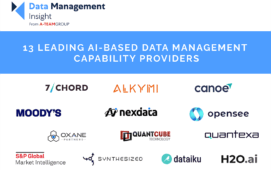Commerzbank may have fallen foul of the UK regulator earlier this year as a result of transaction reporting errors, but the German bank has been engaged in sorting out some of its underlying data issues by doing some of the groundwork to integrate the customer data acquired as part of its takeover of Dresdner Bank back in 2008 with its own internal customer database. Similar to some of the work that has been going on behind the scenes at Royal Bank of Scotland with ABN Amro’s customer data, Commerzbank has been moving towards a more integrated data infrastructure over the last 18 months.
In the second half of this year, the bank put in place a more integrated organisational structure across all of its business lines and in August, it rolled out new technology infrastructure to support this new structure. Frank Annuscheit, who is responsible for group services on the Commerzbank board of managing directors, explains how all of this will facilitate the move of Dresdner Bank’s customer data onto its own systems: “In August, we achieved an important milestone for the merger of the IT systems on schedule, with the largest roll out of software in the history of Commerzbank. We have thereby put in place the necessary conditions for migrating the business and customer data of the former Dresdner Bank to the Commerzbank systems and processing them there.”
The focus has therefore been on increasing the systems capacity for the increased number of customer data records, much the same as went on recently at RBS. According to Annuscheit, the plan is to complete this migration process by the second quarter of next year.
Within Germany, the majority of the former Dresdner Bank customers will keep their former account numbers and sort codes, he adds. Most of the mapping of this customer data is likely to be behind the scenes, in order to ensure there are no duplicate records or incompatibilities with the bank’s internal systems.
Unlike most rollouts of this scale, the German bank has been able to achieve many integration objectives ahead of schedule across its 1,600 branches and around 700 former Dresdner Bank locations, says Annuscheit. Commerzbank estimates that it will achieve significant cost savings from the overall integration process (beyond that of just the reference data aspects), totalling €1.1 billion by the end of the year, exceeding original expectations by 10%. This is expected to form a major part of the overall total saving of €2.4 billion, which is expected to be realised by 2013.
This should go some way towards making up for the £595,000 fine the bank had to pay to the UK Financial Services Authority (FSA) for data related failures underlying its transaction reports to the regulator over the period of two years. According to the FSA, as an incoming EEA branch passporting into the UK under Article 32 of the MiFID Directive, Commerzbank failed to provide correct transaction reports to the regulator between 5 November 2007 and 20 November 2009.
The bank failed to meet the FSA’s data requirements over a period of two years with regards to these reports for approximately 1.03 million transactions, an estimated 94% of its reportable transactions during that period. For example, one of the anomalies identified by the regulator in the report was the use of incorrect internal codes for the counterparty field, which meant that the FSA was unable to allocate individual transactions to the same client.
Subscribe to our newsletter




